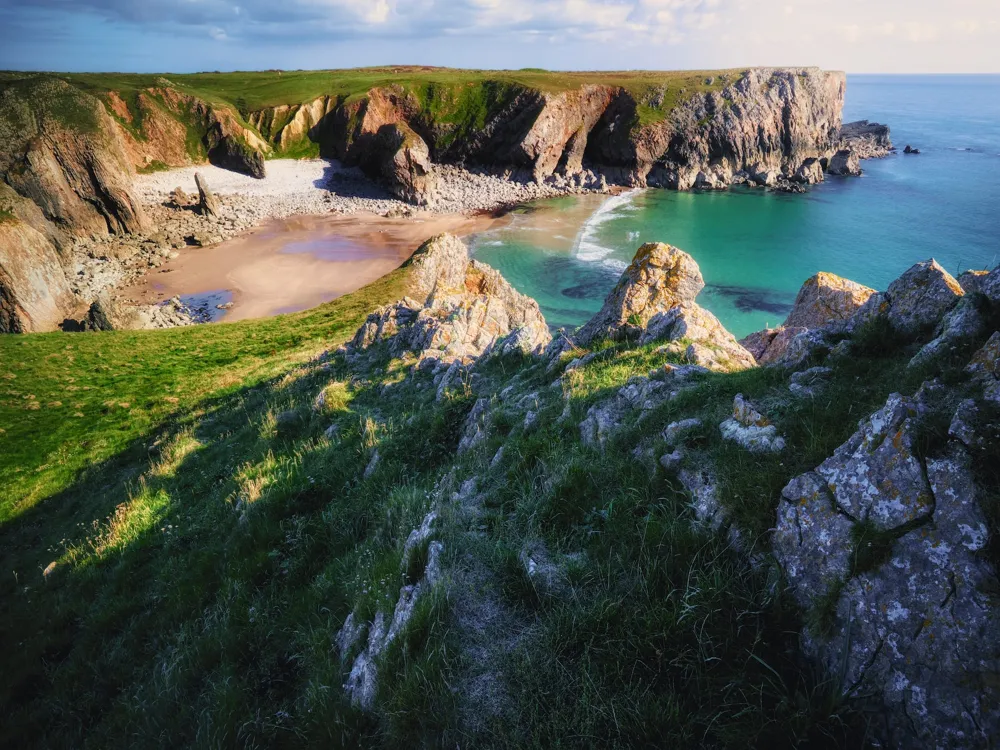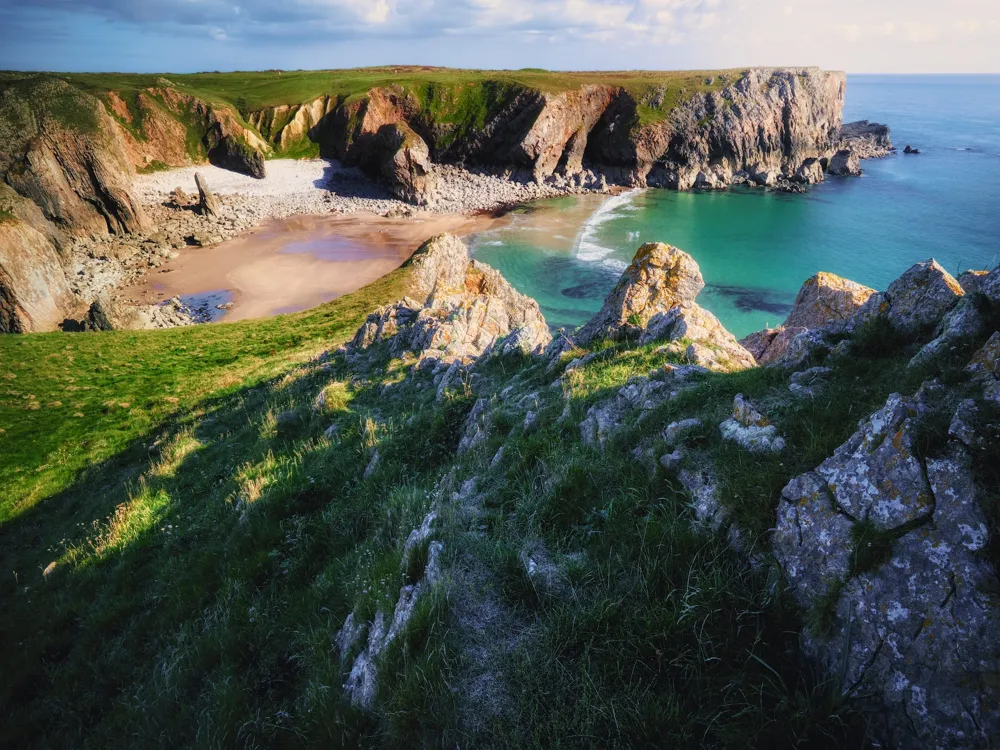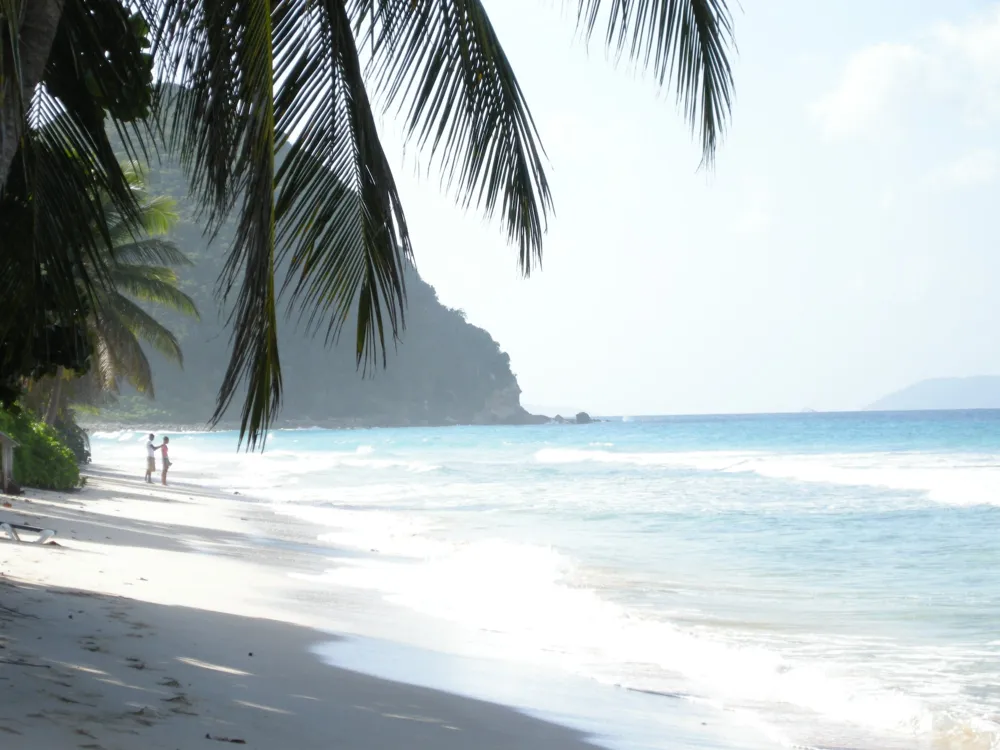Halong Bay, a UNESCO World Heritage Site located in Quang Ninh Province, Vietnam, is an iconic natural wonder characterized by its emerald waters and thousands of towering limestone islands topped with rainforests. Often referred to as the 'Bay of Descending Dragons,' Halong Bay spans an area of around 1,553 square kilometers and is home to approximately 1,600 islands and islets, most of which are uninhabited and unaffected by human presence. This natural marvel has not only captivated visitors with its breathtaking scenery but also with its rich biodiversity and historical significance. The legend of Halong Bay is as fascinating as its landscape. According to local folklore, the bay was formed when dragons, sent by the gods, descended to help the Vietnamese fight off invaders. As the dragons spat out jewels and jade, these turned into the islands and islets, creating a natural fortress against the invaders. The literal translation of 'Halong' means 'where the dragon descends into the sea,' and the legend continues to be a source of pride for the Vietnamese people. The bay's geographical formation is a subject of awe and wonder. Over millions of years, the bay has undergone various changes due to geological movements and sea-level changes. The limestone karsts and isles in various shapes and sizes are the result of centuries of erosion and weathering. These formations are rich in tropical vegetation, creating a stunningly unique ecosystem. The area is recognized for its spectacular seascape of limestone pillars and is of great interest to geologists, geographers, and nature lovers alike. Halong Bay's beauty is not just confined to its landscapes. The bay is also home to several ancient cultures dating back tens of thousands of years. There are numerous archaeological sites, including ancient Vietnamese fishing villages and floating communities that have been living in harmony with nature for generations. These elements combine to make Halong Bay not just a natural wonder but also a reservoir of Vietnamese history and culture. The architectural beauty of Halong Bay is not in man-made structures but in its natural formations. The bay is a masterpiece of nature, sculpting a variety of shapes that inspire awe and wonder. The most remarkable architectural elements are the limestone karsts and caves that have formed over millions of years. Each island and cave in Halong Bay has its unique shape and story, creating a mysterious and mystical ambiance. Among these natural architectural wonders is the Sung Sot Cave, also known as the Surprise Cave, which is one of the largest and most spectacular caves in Halong Bay. The cave is a majestic symphony of stalactites and stalagmites, with rock formations that ignite the imagination. Another notable cave is the Dau Go Cave, known for its large, colorful stalagmites and stalactites that resemble petrified waterfalls. The limestone formations are not just limited to the caves. They extend to the islands themselves, with each island having its unique shape and legend. For instance, the Fighting Cocks Islet, a symbol of Halong Bay, looks like two chickens facing each other in battle. There's also the Turtle Island and the Human Head Island, each telling its own story through its unique shape. These natural formations are complemented by the cultural architecture of the floating villages. The houses, made of bamboo and wood, float on the bay, creating a harmonious balance between man and nature. These villages, such as Cua Van and Vung Vieng, not only provide a glimpse into the traditional lifestyle of the fishermen but also showcase the sustainable coexistence of humans with their environment. The best time to visit Halong Bay is from October to April when the weather is cooler and less humid. The dry season offers clearer skies and smoother sailing conditions, ideal for cruising and exploring the islands. When packing for Halong Bay, it's important to include light and comfortable clothing, swimwear, sun protection, insect repellent, and comfortable footwear. Also, don't forget to bring a camera to capture the stunning scenery. Selecting the right cruise is crucial for your Halong Bay experience. Research the options well in advance, considering factors like the length of the trip, the route, onboard facilities, and customer reviews. When visiting the floating villages and interacting with locals, it's important to be respectful and considerate of their culture and lifestyle. Avoid littering and be mindful of your environmental impact. Always prioritize safety while on a cruise. Follow the safety instructions provided by the crew, wear life jackets when required, and be cautious when participating in water activities. Halong Bay is accessible from Hanoi, the capital city of Vietnam. The most common way to reach Halong Bay is by road, with a journey time of approximately 3-4 hours. There are various transportation options available, including private cars, shuttle buses, and public buses. For a more scenic route, some tourists opt for a seaplane from Hanoi, offering a bird's-eye view of the bay. Additionally, there's also the option of taking a train to Yen Vien and then a bus to Halong Bay, though this is a longer route.Overview of Halong Bay
Architecture of Halong Bay
Tips When Visiting Halong Bay
Best Time to Visit
Packing Essentials
Choosing a Cruise
Respecting Local Culture
Safety Tips
How To Reach Halong Bay
Bai Chay Market
Halong Bay
₹ 15,260 onwards
View halong-bay Packages
Halong-bay Travel Packages
View All Packages For Halong-bay
Top Hotel Collections for Halong-bay

Private Pool

Luxury Hotels

5-Star Hotels

Pet Friendly
Top Hotels Near Halong-bay
Other Top Ranking Places In Halong-bay
View All Places To Visit In halong-bay
View halong-bay Packages
Halong-bay Travel Packages
View All Packages For Halong-bay
Top Hotel Collections for Halong-bay

Private Pool

Luxury Hotels

5-Star Hotels

Pet Friendly






















